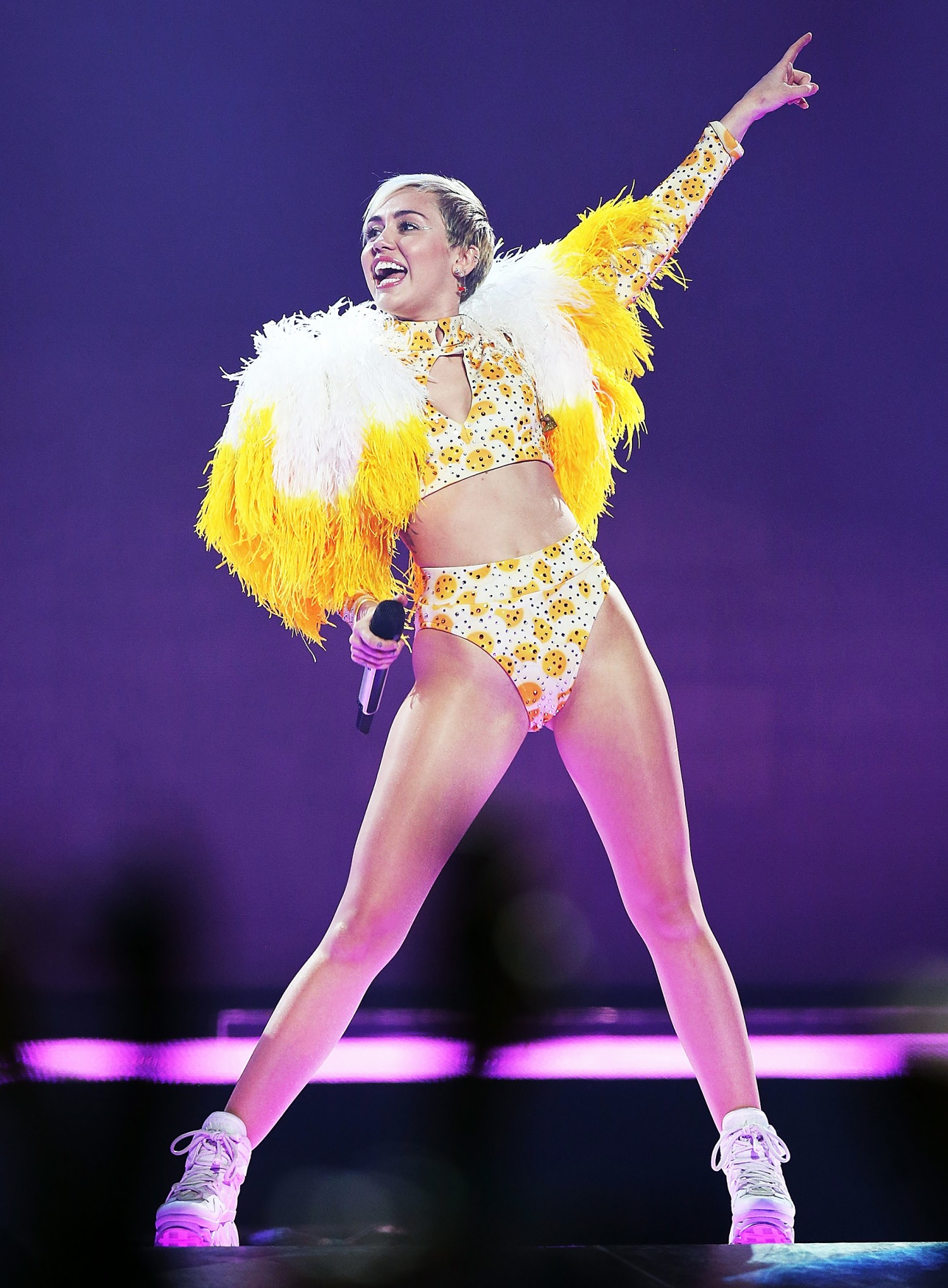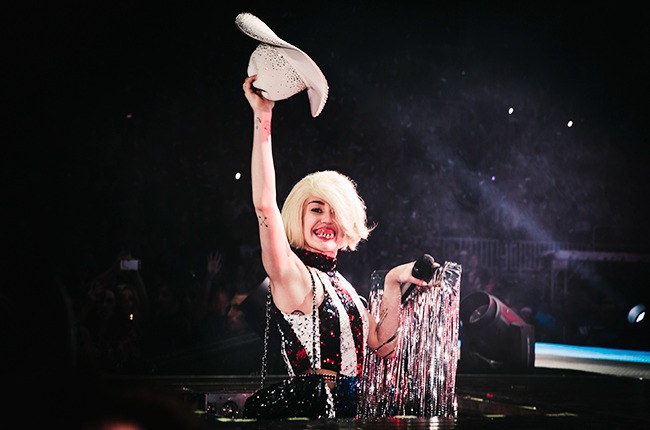Miley Cyrus’s highly publicized Bangerz tour, launched in support of her 2013 studio album Bangerz, has generated both widespread attention and concern, especially among parents of younger fans. While the tour has been praised by some for its energetic performances and bold artistic direction, it has also attracted criticism from segments of the public who view aspects of the show’s content as inappropriate for general audiences. In particular, some parents have voiced concerns about the tour’s explicit themes, visuals, and stage choreography — leading to formal complaints and even calls for the show to be reviewed or modified.

From Hannah Montana to Bangerz: A Drastic Shift in Image
Miley Cyrus, who rose to international fame as the lead character in Disney Channel’s Hannah Montana, underwent a highly publicized image transformation as she transitioned into adult pop stardom. Her Bangerz album marked a clear departure from her teen pop roots, both musically and visually. Songs like “We Can’t Stop” and “Wrecking Ball” showcased a more mature tone, and the accompanying tour sought to reflect her evolving identity as a performer.
While Cyrus’s reinvention was embraced by many of her adult fans and music critics, some parents and longtime followers who had associated her with family-friendly entertainment were caught off guard by the concert’s provocative themes.
What the Tour Includes
The Bangerz tour features elaborate stage sets, colorful costumes, bold dance routines, and multimedia elements — all intended to amplify the concert experience. Some of the performance elements include symbolic imagery, artistic references, and theatrical gestures designed to reflect the themes of freedom, rebellion, and personal transformation.
However, it is precisely these elements that have become a focal point of concern for some audience members, particularly parents who attended the concerts with younger children. According to reports from local media outlets and social media platforms, some attendees have described parts of the show as too suggestive or graphic in nature.

Nature of the Complaints
Several parents who purchased tickets expecting a pop concert experience similar to Cyrus’s earlier work expressed disappointment and concern over the tone of the performances. Some cited costumes, dance choreography, and stage visuals that they believed were not suitable for children. As a result, a number of formal complaints were reportedly submitted to concert organizers and event promoters.
In certain locations, advocacy groups have called for venue operators to consider implementing age restrictions or issuing clearer content advisories in promotional materials. While there have been no official rulings or cancellations attributed to these concerns, the conversation around age-appropriate entertainment has gained renewed visibility.
Public Reaction: Mixed Responses
Reactions to the controversy have been mixed. Many fans — particularly older teens and young adults — have defended Cyrus’s artistic freedom and right to creative expression. Supporters argue that the performer has clearly transitioned out of her child star phase and should not be expected to cater to younger audiences indefinitely. They also point out that the album and tour were not marketed specifically to children.
Conversely, some critics maintain that Cyrus’s previous association with family entertainment may have led some parents to assume the live performances would be similarly suitable. This perception gap has contributed to the backlash, as some attendees feel misled or unprepared for the nature of the concert.

Industry Standards and Advisory Measures
In the broader entertainment industry, live concert tours generally fall outside the regulatory frameworks that govern film or television ratings. However, artists and promoters often provide advisories regarding explicit content or recommend age guidelines for attendees.
Some event promoters and ticketing platforms began to include clearer notices following the initial wave of complaints. These disclaimers typically outline that the performance may contain mature themes, and parents are encouraged to use discretion when purchasing tickets for minors.
Cyrus’s Artistic Intentions
Though Miley Cyrus has not issued formal apologies in relation to the tour’s content, she has previously explained in interviews that her artistic direction during the Bangerz era was a deliberate statement of independence and self-expression. The tour, in her view, was intended to challenge expectations, redefine her image, and showcase her personal evolution both as an artist and as a young woman navigating adulthood.
This messaging resonates with fans who appreciate the authenticity and creativity Cyrus brings to her work. For them, the Bangerz tour represents a celebration of individuality and boldness in a highly competitive and often restrictive music industry.

Impact on the Tour’s Success
Despite the controversy, the Bangerz tour achieved commercial success, selling out major arenas across North America and internationally. Critics from prominent entertainment publications generally praised the show’s production value and performance energy, although they often noted the mature nature of the content.
Sales figures and attendance suggest that the backlash, while significant in certain circles, did not substantially diminish public interest. Nonetheless, the discussions around the tour have prompted renewed consideration of how artists manage the expectations of diverse audiences.
Balancing Art and Audience Expectations
The situation surrounding Miley Cyrus’s Bangerz tour reflects a broader challenge in the entertainment world: balancing artistic authenticity with audience expectations. Particularly for performers who began their careers in family-friendly formats, transitioning to adult-themed content can provoke intense public scrutiny.
Open communication about the nature of a show, clear advertising, and appropriate advisories can help audiences make informed decisions — especially when minors may be involved. For artists, it highlights the importance of understanding how public perceptions can influence reception, even years after a change in creative direction.

Conclusion
Miley Cyrus’s Bangerz tour stirred debate not only for its musical performances but also for the expectations it challenged. While parental concerns led to formal complaints and calls for content review, the broader discussion highlighted ongoing questions about age-appropriate entertainment, transparency in promotion, and the complex evolution of public figures. As artists continue to redefine their boundaries and messages, conversations like these remain central to how audiences engage with live performance experiences.
